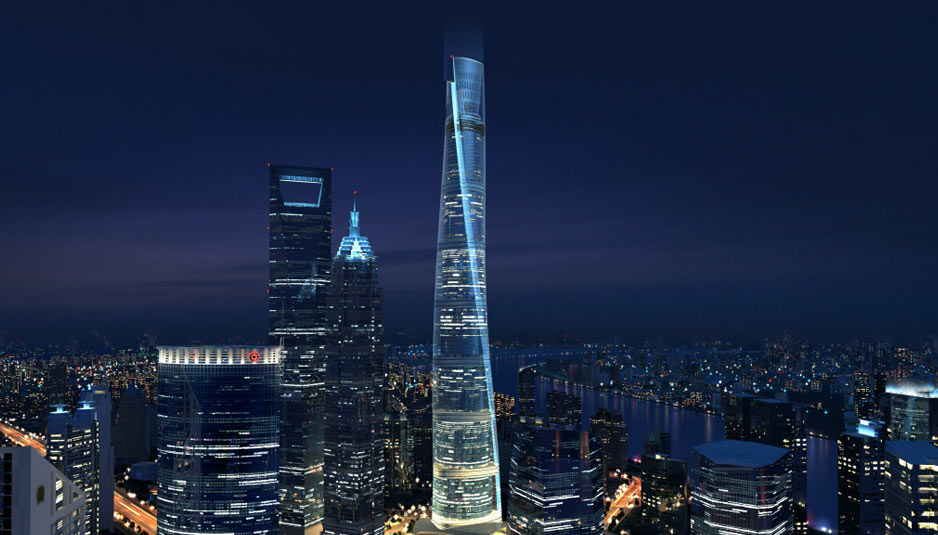The extreme engineering: the Shangai Tower

ww3.sinaimg.cn/
The Shangai Tower is the last jewel of Chinese inaugurated this year. The building is located in the Pudong district of Shanghai. The building provides 128 floors of which 5 are underground, with a total area of 574,000 square meters with a total cost of around 2 billion dollars. And ‘the second tallest skyscraper in the world with an approximate height of 632 meters, second only to the Burj Khalifa in Dubai. The construction will be provided entirely by offices, shops, a shopping center and the hotel Jin Jiang, located between the 84th and the 110th floor, is the tallest hotel in the world. Then a vertical city, where there is everything you need to be self-sufficient. Moreover, moving from one floor to another are not a problem since the skyscraper has provided the the world’s fastest lift, capable of reaching 66 km / h or 18 m / s, an extraordinary rate that will significantly reduce the rates of ascent and descent.
Analyzing the structure starting from the foundations, the numbers are staggering: the engineers have designed about 1000 poles in the ground which touch depths greater than 80 meters, and then threw massive amounts of concrete to build a base of 20 m thick that serve as anchor the main building. This design choice is that over time to reinforce the seismic resistance of the foundations, also to prevent a collapse of the building. In fact, so heavy a structure built on a soft ground and clay like that of Shanghai, as close to the Yangtze River Delta, has a higher risk of sinking. For the completion of the casting of the foundation, at one time, they used 450 concrete mixers, 8 pumping stations without stopping for 63 hours.
From the structural point of view, the skyscraper presents a stratified structure of nine cylindrical volumes that are enclosed in two layers of glass, one inside and the other outside which may vary from a few centimeters to tens of meters. This design choice is to improve the energy aspect of the building, creating a large layer of insulation can reduce the cost of air conditioning inside. According to Gensler studio’s estimates, this will allow the building to save $ 2.5 million in annual utility bills. Yet the appearance energy, we can say that although most of the energy of the building is provided by the traditional systems, on the top of the tower are installed wind turbines able to guarantee a significant surplus of energy per year.
Another very important aspect is the wind resistance that the building must be ensured. To solve this problem, designers have carefully studied in the wind tunnel the form that had to take on the structure. The result is a building that is twisted in a spiral, about one degree per floor. In fact, thus conceived, the tower slows the air currents, which revolve around the building. This will interrupt the possible vortices that, given the dizzying height of the skyscraper, can cause stress in the case of very strong wind. This unique design reduces by about 24% the action of wind loads on the skyscraper. In any case, the building is provided with a system for damping oscillations caused by the wind and earthquake formed by a large mass composed of steel plates of different sizes for a total weight of 1000 tons. Such a system reduces the movements suffered by the building and without it the upper floors daily life inside the building would be very difficult.
